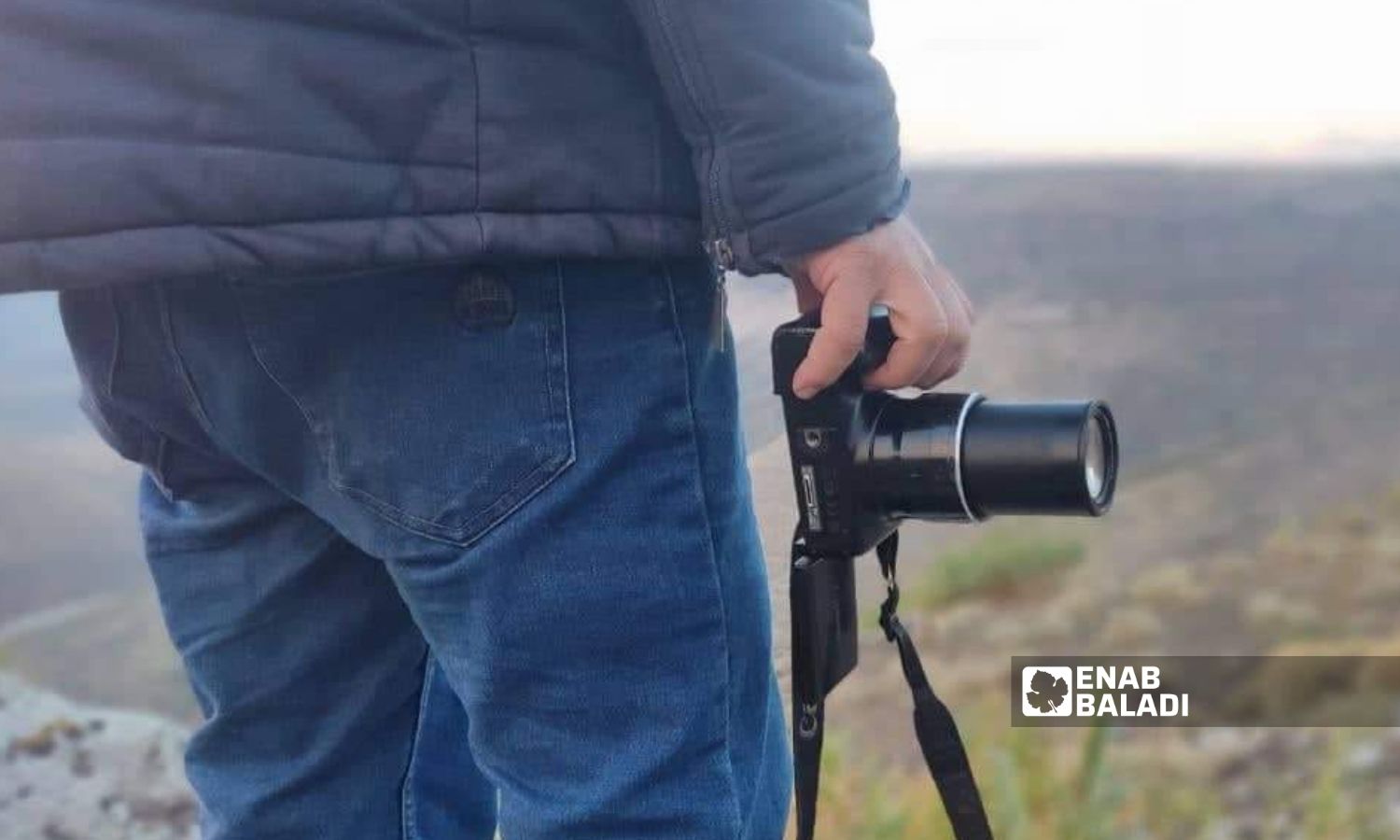The events that Daraa has been witnessing for years prompted dozens of people to devote their cameras and pens to conveying the field reality in the region, but the security reality after the Syrian regime took control of the southern region made their mission fraught with dangers.
The security situation after the Syrian regime took control of the Daraa governorate in July 2018 imposed security risks on the lives of media professionals who continued to cover the events.
As a result, a number of them were assassinated and arrested, while some of them live in a state of fear and caution of possible security threats and challenges.
At the beginning of November, journalist Atef al-Saadi was killed while he was covering the battles between armed groups affiliated with the Central Committees and supported by the Russian-backed Eighth Brigade and groups accused of belonging to the Islamic State group.
Fears of arrest
The spectre of the security fist haunts activists and journalists in regime-held areas, which makes arrest an obsession that forces media professionals to work secretly, hide their names, and use the available digital security means.
Journalist Mohammad al-Mafaalani, based in the eastern countryside of Daraa, told Enab Baladi that he is wanted for three security branches on charges of dealing with “malicious channels.”
Al-Mafaalani started his work in the field of media after the Russia-brokered “2018 security settlement” to fill the void left by the “opposition media” after the regime took control, he said.
The regime’s media “machine” dominated the scene after most of the media professionals sought refuge outside Syria, while others adhered to neutrality for fear of the security grip, according to al-Mafaalani.
Before 2018, the southern governorate had dozens of journalists, correspondents, and local media experiences, which declined due to the security power.
Security concerns prompted Zaher (who refused to reveal his full name for security reasons) to quit media work for fear of assassination and arrest after he worked for years as a photographer with the former Free Syrian Army factions.
Zaher, 25, ended his work with the end of the factions’ control over the area, so he turned to daily agricultural work, according to what he told Enab Baladi.
Journalist Mahmoud, 27, said that the Syrian regime is in a state of continuous security monitoring of former media professionals, pointing out that most of the detainees who were released were asked about media professionals in the region during their detention.
This prompted Mahmoud to work with great secrecy and caution and to use a fictitious name to hide his identity.
The regime forces arrested media activist Walid al-Rifai, during a raid on his house in the town of Umm Walad in the eastern countryside of Daraa in August 2020 after he was subjected to a series of arrest attempts.
Media activist Mohammad al-Mudhaib, of Nawa city was also arrested by regime forces after taking control of the southern region.
On August 16th, the family of media activist Tayseer al-Essa received news of his death in detention after his arrest in late 2018.
Security surveillance
The Syrian regime is persecuting media professionals in Daraa and monitoring them even in the Telegram rooms and WhatsApp groups dedicated to transmitting news.
Daraa police leaked lists of 192 names, including women, who are wanted for joining the WhatsApp group last January, accusing them of “insulting the prestige of the state” for sharing news about the field reality in the region.
On the 27th of the same month, a “settlement” was conducted in the state “Saraya” building for these names, which prompted many media professionals to avoid joining similar networking groups.
The official spokesman for the Free Horan League, Abu Mohammad al-Hourani, said that one of the foundations of safety for media professionals is to use pseudonyms and to avoid using Syrian network lines as much as possible.
Journalists should also avoid carrying their phones that contain work files while passing through regime checkpoints, al-Hourani added.
Victims of assassinations
Journalist Atef al-Saadi was killed on 6 November, two days after he was subjected to an assassination attempt in front of his house in the town of Muzayrib, west of Daraa city.
In a previous interview with Enab Baladi, al-Saadi said that cases of targeting media professionals in Daraa are still on the rise, as many media workers and journalists in Daraa have been assassinated and arrested during the past four years.
The late journalist considered that targeting media professionals is a policy followed by the regime and the Islamic State to “keep mouths shut” and prevent a true picture of the region from being conveyed.
In October 2020, unknown persons assassinated the journalist Shadi al-Sarhan, in the town of Dael, coinciding with the assassination of the journalist Bashir al-Faraj, in the town of Inkhil.
The Martyrs Documentation Office in Daraa documented the assassination of 136 media activists and journalists in the Daraa governorate from the outbreak of the Syrian revolution in 2011 until last April.
The office stated that 55 of the media professionals were killed during targeting operations with explosive devices and clashes, while 40 others were killed as a result of the regime’s shelling of the governorate.
Also, nine workers in the media field were killed after being directly targeted by gunfire of unknown assailants, and two media workers were killed by snipers by the regime forces, three others were summarily executed, and eight were killed under torture.
This article was edited by The Syrian Observer. The Syrian Observer has not verified the content of this story. Responsibility for the information and views set out in this article lies entirely with the author.


